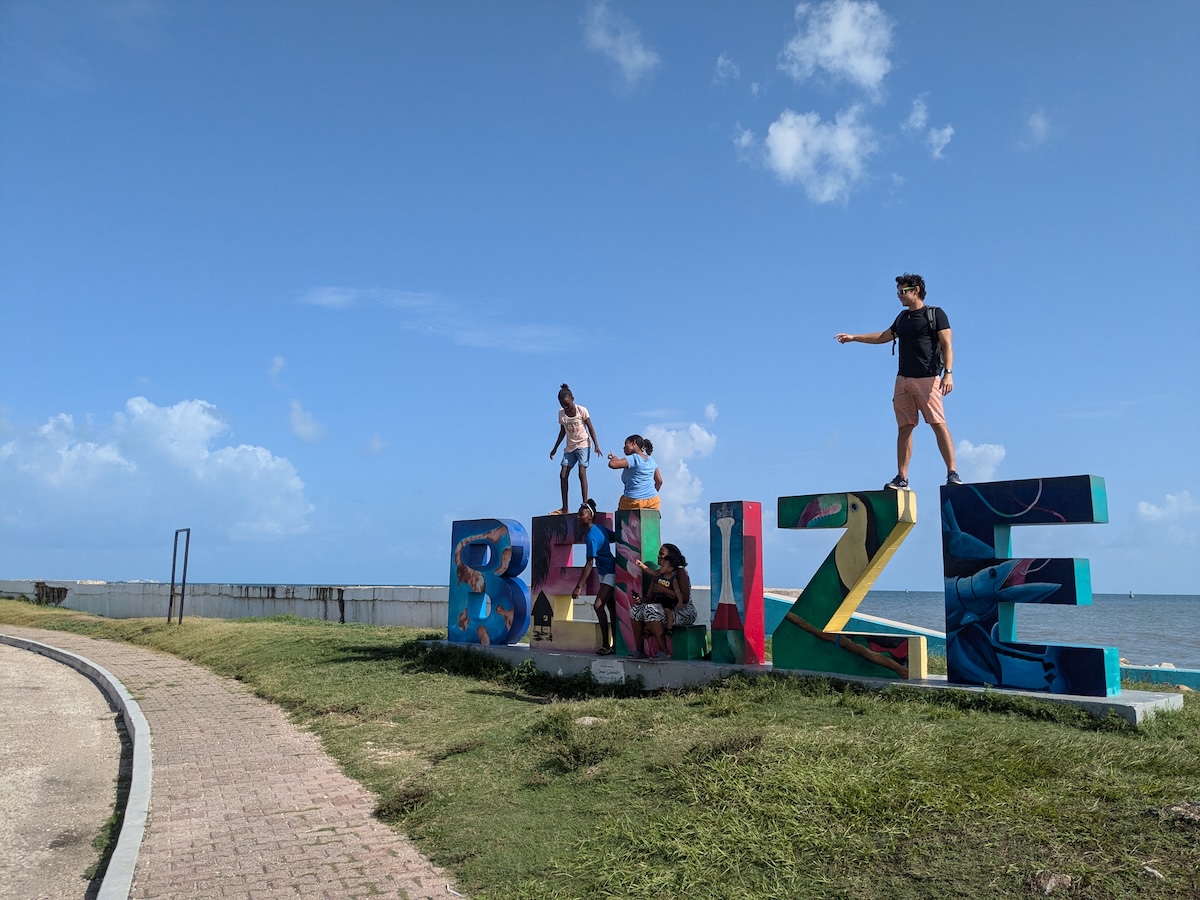While most travelers gravitate towards Madrid and Barcelona, there’s so much to discover in Andalucia in the south of Spain. Renowned for its vibrant culture, rich history, and breathtaking landscapes, a visit to this region of Spain will reveal the heart of the country’s historical and cultural diversity.
The best part is that there’s something for every type of traveler, regardless of whether you’re drawn by the allure of Andalucia’s world-famous historical sites, its sun-drenched beaches, its stunning landscapes, or its unique cultural experiences.
This guide to the best attractions in Andalucia will take you through the region’s top things to see and do, including historic landmarks, natural wonders, and cultural experiences. Let’s dive into what makes Andalucia a must-visit destination!

Alhambra (Granada)
I’ve been to Andalucia numerous times and, in my opinion, the number one must-see attraction in the south of Spain is the Alhambra in Granada.
This UNESCO World Heritage site, perched atop a hill overlooking the city, is a testament to the architectural and cultural magnificence of Andalucia’s Moorish past. Originally built as a fortress in the 9th century, the Alhambra was transformed into a royal palace in the 13th century by the Nasrid dynasty.
What makes the Alhambra one of the best attractions in Andalucia is its stunning blend of architectural styles.
The intricate Islamic art and architecture are evident in the delicate stucco walls, elegantly carved wooden ceilings, and serene courtyards. The Palace of the Lions and the Court of the Myrtles are particularly noteworthy for their exquisite craftsmanship and the use of water to create a peaceful atmosphere.
While you’re here, don’t miss the lush Generalife Gardens. They’re a marvel of landscape architecture, featuring a variety of flora, tranquil water features, and pathways that offer a serene escape from the bustle of the city.
This top attraction in Andalucia is the most visited monument in Spain so it’s essential to buy your tickets in advance (they often sell out!). The site is huge, so if you can, I recommend allocating a full day for visiting the Alhambra to fully appreciate its beauty and historical significance.
Mezquita-Cathedral (Córdoba)
Andalucia’s fascinating Moorish past comes center stage once again with the next attraction on this list: the Mezquita-Cathedral of Córdoba. Often simply referred to as the Mezquita, this one-of-a-kind building is a symbol of the historical coexistence of cultures in Andalucia.
This UNESCO World Heritage site is a stunning representation of Islamic architecture, later converted into a Christian cathedral, making it a unique blend of two distinct religious influences.
Originally built as a mosque in the 8th century, the Mezquita was one of the grandest in the Islamic world. After the Reconquista, it was converted into a cathedral in the 13th century, yet much of its original Islamic architecture was preserved. This blend gives the Mezquita its unique character, making it a must-visit attraction.
The most striking feature of the Mezquita is its forest of columns and arches inside the main hall. Over 850 columns of jasper, onyx, marble, and granite support a series of double arches that create a visual rhythm and a sense of endless space.
In contrast, the cathedral at the center of the mosque, built in a Renaissance style, offers a stark yet harmonious contrast. The ornate altar, choir, and chapels within the cathedral section add to the site’s historical and architectural richness.
There’s no other monument in the world like the Mezquita and many travelers make a day trip to Cordoba simply to visit it.
You can buy tickets to the Mezquita in advance to save time and do the visit on your own but I highly recommend taking a guided tour. With a local guide sharing stories, information, and pointing out its architectural highlights, you’ll discover so much more about this beautiful monument.
Seville Cathedral and Real Alcázar (Seville)
Seville, the vibrant capital of Andalucia, houses two of the region’s most magnificent landmarks: the Seville Cathedral and the Real Alcázar. Both are UNESCO World Heritage sites and epitomize the historical and architectural grandeur of the area.
Seville Cathedral is one of the largest Gothic cathedrals in the world. Built on the site of a former mosque, its construction began in the early 15th century and took over a century to complete. This majestic structure is renowned for its immense size, awe-inspiring architecture, and the Giralda, a bell tower that was originally a minaret.
Inside, the cathedral’s interior is equally impressive, with its vast nave, stunning stained glass windows, and an array of chapels. The main altar, with its intricate gold leaf work, is a masterpiece of Gothic woodcarving. The cathedral also houses the tomb of Christopher Columbus, adding to its historical significance.
Just a short walk from the cathedral lies the Real Alcázar of Seville, a royal palace originally built by Moorish Muslim kings.
It’s one of the most outstanding examples of Mudéjar architecture found on the Iberian Peninsula. Over the centuries, it has been expanded and remodeled several times, resulting in a palace complex that blends Islamic, Gothic, Renaissance, and Baroque styles.
The Real Alcázar is famed for its ornate stucco walls, beautiful courtyards, and extensive gardens. The Patio de las Doncellas and the Salon de Embajadores are highlights, showcasing exquisite tile work and intricate wooden ceilings. The gardens of the Alcázar offer a tranquil escape, with their fountains, pavilions, and lush vegetation.
These two Seville attractions are very popular and there are often long lines to enter. It’s a good idea to buy your tickets in advance or even opt for a guided tour of both monuments to get the most of your visit.
Sierra Nevada National Park
Sierra Nevada National Park, located in the heart of Andalucia, is a haven for nature enthusiasts and adventure seekers. This park, distinguished as a UNESCO Biosphere Reserve, is home to the highest peaks in mainland Spain, including Mulhacén and Veleta.
Its diverse landscapes range from snow-capped mountains to lush valleys, making it a year-round destination for outdoor activities. Hiking is a popular activity in Sierra Nevada, with trails available for all levels of experience.
In winter, the Sierra Nevada transforms into a premier ski destination. The ski resort, located in the park, provides excellent facilities for skiing and snowboarding, boasting long sunny days even in the winter months.
A great way to see part of the Sierra Nevada is to visit the quaint mountain villages of Las Alpujarras. For example, from Granada, you can easily visit the villages of Pampaneira, Bubión, and Capileira on a day trip with a car.
Whether you’re looking to conquer the high peaks, enjoy leisurely walks, or simply bask in nature’s beauty, Sierra Nevada National Park offers an unforgettable experience in the heart of Andalucia.
Costa del Sol Beaches
The aptly named the “Coast of the Sun” is one of Andalucia’s most cherished treasures. This sun-kissed stretch along the Mediterranean Sea is famous for its golden sandy beaches, warm climate, and vibrant coastal towns.
Here are a few of the most beautiful coastal towns in Costa del Sol:
- Known for its luxury and glamour, Marbella boasts beautiful beaches like Playa de la Fontanilla, coupled with upscale amenities and beach clubs.
- A favorite for families and party-goers alike, Torremolinos offers lively beaches such as La Carihuela, renowned for its seafood restaurants and lively atmosphere.
- For a more serene experience, Nerja‘s beaches, including the stunning Playa Burriana, offer crystal-clear waters and a backdrop of dramatic cliffs.
The Costa del Sol is also a hub for water sports enthusiasts. Activities like jet skiing, windsurfing, paddle boarding, and scuba diving are readily available along the coast.
Best of all, thanks to Andalucia’s mild winters, Costa del Sol is a beach destination year-round, making it the perfect escape during the colder months.
Tip: Most travelers arrive in Malaga to start their exploration of Costa del Sol.

Caminito del Rey (Malaga)
Up for some adventure? Then the Caminito del Rey may be the Andalucian attraction for you!
This hike is a remarkable feat of engineering and one of Andalucia’s most thrilling attractions. This narrow walkway, set against the stunning backdrop of the El Chorro gorge in Malaga province, offers an adventurous and visually stunning experience for visitors.
Originally constructed in the early 20th century for workers at the hydroelectric power plants at Chorro Falls and Gaitanejo Falls, the path gained fame for its precarious state. After extensive renovations for safety, it reopened in 2015, allowing adventurers to safely traverse the once-dangerous route.
The pathway, hanging 100 meters above the river below, stretches over 7 kilometers. It winds through beautiful landscapes, offering breathtaking views of the gorge, the surrounding cliffs, and the turquoise waters of the Guadalhorce River. The most iconic section is a suspension bridge crossing the narrowest part of the gorge.
The best way to get to Caminito del Rey is by car but it’s also a popular guided tour from Malaga. A guided tour will typically include transportation, entrance fees, and a guide for the excursion, making it a hassle-day day out.
Tip: The walk is moderate in difficulty and accessible to anyone with a basic level of fitness. However, it’s not recommended for those with a fear of heights.
Flamenco Shows in Andalucia
At the heart of Andalucian culture lies the art of flamenco. This UNESCO-listed intangible cultural heritage combines singing, guitar playing, dance, and rhythmic clapping, creating a performance that is both emotionally powerful and visually stunning.
Experiencing a flamenco show is a must-do when visiting Andalucia as it offers a memorable glimpse into the region’s soulful traditions and vibrant history.
I’ve personally seen flamenco performances in Seville but it’s not the only place in Andalucia to catch some passionate flamenco shows. Here are the best places to experience flamenco:
- The birthplace of flamenco, Seville is home to numerous “tablaos” (flamenco bars) and theaters where nightly shows are performed. The Triana neighborhood, in particular, is famed for its authentic flamenco scene.
- In the historic Albaicín and Sacromonte neighborhoods in Granada, flamenco shows often take place in “cave houses,” offering a unique and intimate setting.
- Known for their own distinct styles of flamenco, Jerez and Cádiz offer an array of performances, from more traditional to modern interpretations.
Festivals in Andalucia
Andalucia’s vibrant culture and rich traditions come alive in its festivals. These celebrations, steeped in history and local customs, offer a vivid insight into the soul of southern Spain.
Attending these festivals isn’t just entertaining; it’s an immersion into Andalucia’s vibrant cultural tapestry. Here are three unique festivals in Andalucia to add to your calendar.
Usually held in April each year, Feria de Abril in Seville has evolved into a week-long celebration of Andalucian culture. The fairgrounds are adorned with colorful “casetas” (tents), traditional flamenco dress, horse parades, and dancing. It’s an opportunity to indulge in local foods, sherry, and experience Seville’s exuberant atmosphere.
Every year, in early May, Cordoba celebrates the Fiesta de los Patios, a unique celebration where residents of Cordoba open their beautifully decorated patios to the public. It’s a competition for the most attractively decorated courtyard, with flowers, fountains, and intricate tiles. Walking through these open patios offers a unique insight into Cordoba’s living history and architectural beauty.
In February, before the Lent season, head to Cadiz as the city comes alive for Carnival. The Carnival of Cádiz is known for its satirical and humorous spirit. Streets come alive with music, elaborate costumes, and performances, especially the “chirigotas,” groups performing satirical and comedic songs. This carnival is a celebration of joy, humor, and creativity.
Tip: Andalucia’s festivals attract many visitors so if you’re planning to attend, it’s essential to plan in advance and book your accommodations early!
White Villages of Andalucia
The White Villages, or “pueblos blancos”, of Andalucia are a series of charming towns known for their distinctive whitewashed houses, a tradition dating back centuries. Nestled in the hills and valleys of the region, these villages offer a glimpse into rural Andalucian life, away from the hustle and bustle of the major cities.
There are a number of white villages that are worth visiting but these are my favorites:
- Unique for its dwellings built into rock overhangs above the Rio Trejo, Setenil de las Bodegas is an architectural wonder. The houses, seemingly emerging from the rock, create a striking contrast with their white walls against the rugged cliffs.
- Dominated by its neo-classical church and the Arab fortress, Olvera is nestled amidst olive groves and is a gateway to the “Via Verde,” a route popular for walking and cycling.
- Known for its breathtaking Puente Nuevo, a bridge spanning a deep gorge, Ronda combines natural beauty with historical depth, making it a popular white village destination.
- Situated on a cliff, Arcos de la Frontera offers stunning views over the Guadalete River and a rich mix of Gothic and Baroque architecture in its historic center.
The White Villages of Andalucia are a must-visit for anyone looking to experience the region’s traditional charm and natural beauty. Each village has its own charm, so spend some time exploring their streets, enjoying the local cuisine, and taking in the beautiful Andalucian landscapes.
Exploring the White Villages is best done by hiring a car but a group tour is also an efficient way to visit a handful of villages on a day trip.

Last Tips on Visiting Andalucia…
Already excited about planning a trip to Andalucia? Here are two tips to keep in mind.
Summer in Andalucia can be brutal, especially inland where temperatures can soar to over 35°C (95°F) during the day. Be sure to stay hydrated and consider adopting the Spanish tradition of siestas to avoid being outdoors during the hottest part of the day.
In my opinion, Andalucia is a wonderful winter destination due to its mild winter weather. It’s less crowded, it’s easier to find accommodation deals, and it’s still warm enough to enjoy outdoor activities. And if it’s snow and winter sports you’re looking for, there’s the Sierra Nevada!
I hope this article has inspired you to visit Andalucia on your next visit to Spain. Happy travels!
Bio: Liza S. got the travel bug at age 2, when her parents took her on her first trip to London. Since then, she hasn’t stopped traveling. Today, she runs two travel blogs, Always in Spain and Visit-Andalucia.com, where she dishes out Spain travel tips and shares experiences about her favorite country.







